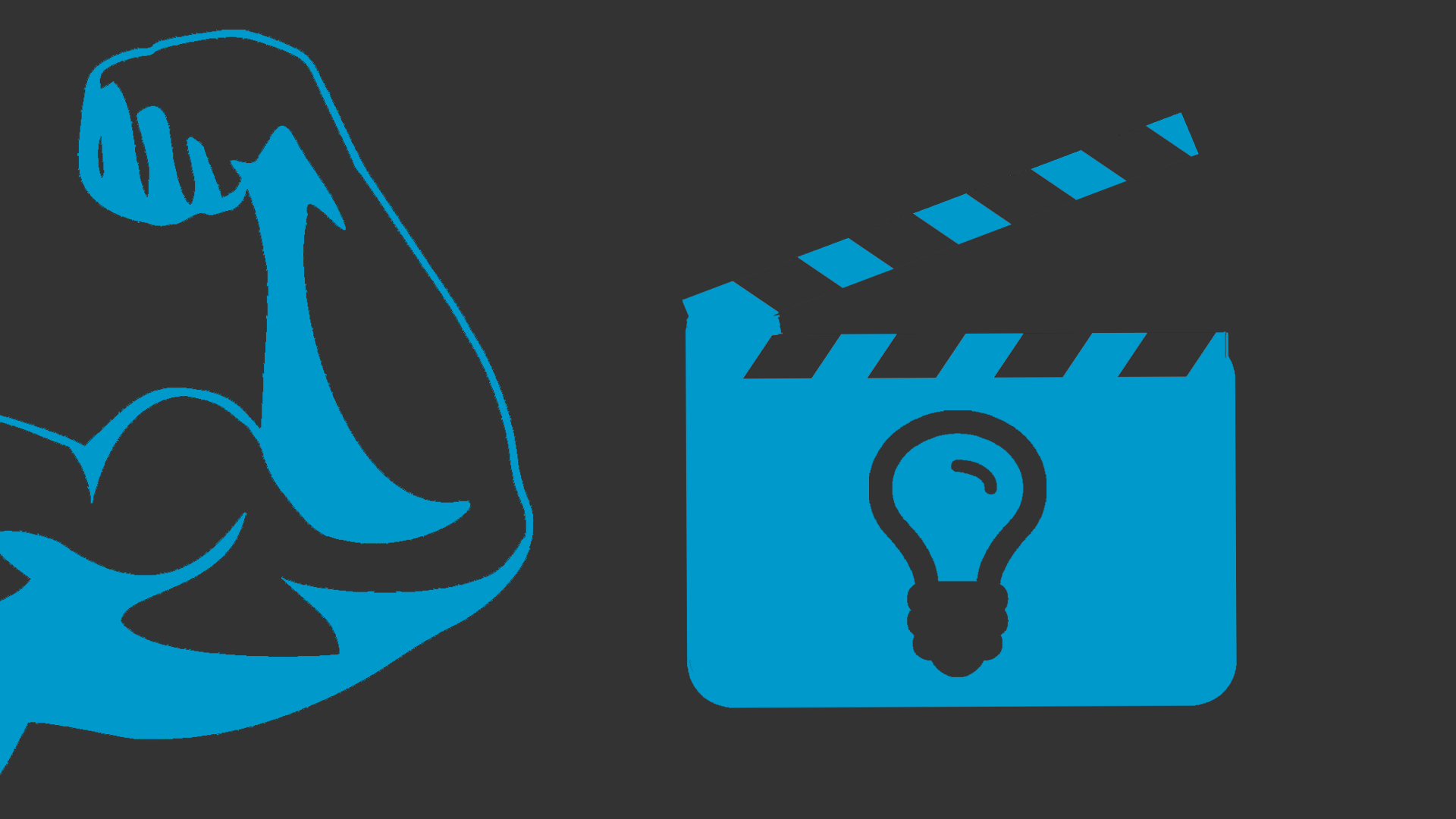
The natural response to any kind of creative block (writer’s or otherwise) is to wait and wonder when it’ll dissipate? Or, we grab the popcorn, sit on your butts, and start consuming inspiration through the TV, computer, phone, etc.
You may even be doing that right now…
Inspiration is never a negative, but you might be setting yourself back substantially if inspiration isn’t paired with direction. Filling your head with content can set a spark, or build into a pile of stuff you like, but have no real connection to.
The best way to remedy Filmmaking Block is to get up and DO! This doesn’t have to cost a boatload, replace your full time job, or be a burden. Examine the free time you have: instead of sitting idle, thinking about what you would do if you had an idea, use your time to get sharp.
Creativity and productivity are muscles: they’re only as strong as you make them and, without exercise, your muscles won’t operate at full potential .You’ll miss out on a lot of opportunities, ideas, and growth.
Here are a few of my favorite, time-tested ways of maintaining a sharpened set of tools while you’re waiting for a big idea or job. If you’re looking for filmmaking project ideas, start here:
1. SHOOT IT LIVE! (DPs/Directors/Editors)
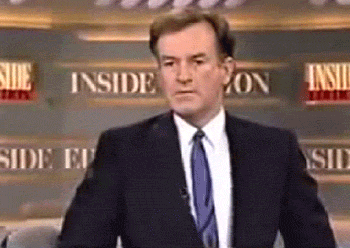
There’re rhythms to camera motion, and there’s an art to shooting long takes. Shooting live music with a single camera is an excellent exercise in maintaining dynamic and continuous framing. Simply bring your camera to a live music event at a bar or small venue. Select one or two lenses to lean on for the shoot.
If need be, ask the artist’s for permission to film. A great way to ask is by making it valuable for them: offer to send them your final clips for their promotion. If the artist/band is independent, they’ll appreciate anything you give them, as most of what they have is probably shot on a cell phone by a friend.
Use 1 lens per song (or the same lens if you only have one), and only stop rolling between songs. All your attention should go to making each performance viewable and enjoyable in a single shot. Make your camera movements rhythmic, stylized, and/or easy on the eyes.
Use your gear’s shortcomings to create a signature style for each performance. If your camera is shaky, use the shakiness to punctuate rhythm. If you only have a 50mm lens, use pulling focus the way you would use cuts in editing.
Again, the goal is to create a dynamic single take that won’t make a viewer bored—assuming they enjoy the music to begin with. Master this and you will become a stand-out DP, director, and editor.
2. KEEP A FOREVER PROJECT (Editors/Directors)

Think of a mechanic’s garage: a good mechanic is always taking apart or rebuilding something. Approach your creative and technical endeavors the same. The more you can play around under the hood within your own shop, the more efficient and inventive you’ll be with your professional and publicly creative endeavors.
When things are slow, have a personal project on-hand to try experiments you haven’t been able to test yet; use footage or a sequence that holds no promise of ever seeing the light of day. You can always toil, tweak, and tinker with flow, color, and transitions in this collection of clips or takes.
This “forever” project will likely change as years pass. You’ll have new footage to experiment with and the resulting increase in your work’s quality will open up new possibilities! Just be sure to always have something on your table to bust open and fiddle with.
3. URBAN HIKES (DPs/Directors)
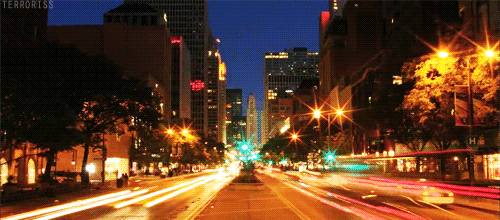
When you’re bored, grab your camera and hit the streets. This has been my go-to and personal favorite. If you need to drive somewhere inspiring, do it! Take a limited amount of lenses and tools—as with the live music exercise, limitations are an asset.
I’ve got five or six areas in my city I enjoy exploring, and each time I take a slightly different route. I follow a different side-street and take as many varying shots of interesting things as I can compose. I change lenses, frame speeds, picture settings, angles, distances, and so on. I do this for as many free hours as I have, and it never feels long enough.
I highly recommend going out alone once in a while. It alleviates the potential pressure of having someone make suggestions, or holding up the walk. Exclusively being accountable to your own instincts helps sharpen them and build confidence.
Through these “hikes,” you’re building a working relationship with all aspects of effective image-making, while collecting a healthy backlog of footage. You never know when you’ll need a cut-away or some B-Roll. You may even stumble upon a location for your next real project!
4. RENT AN ARSENAL (DPs/Directors)
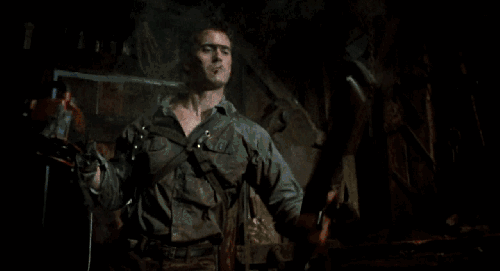
When you want to try out a new lens or stabilization rig, you’re looking at $20-$100. To diversify your reel and the tools you’re familiar with, $20 here and there is a pretty low price!
Go through your local rental house’s catalog and pick out gear you want to test. If you can think of a simple concept for a tiny short, spend a couple hours shooting it with nice, more advanced gear. This way, you’re expanding your technical knowledge and enhancing your storytelling skills.
Most rental houses also have weekend rates that provide MASSIVE discounts. You can rent gear on a Friday afternoon, and keep it until Monday morning for the price of a single day. For a recent short, we capitalized on a holiday weekend to round out our production suite for five days, at $150!
These gear tests also help you build relationships with local rental houses. They are generally small, locally owned shops, where raport goes a long way when you need something!
5. SHOOT SPEC. (DPs/Directors)
Want to learn how to shoot an athletic apparel commercial? Come up with one!
A spec (Speculative) commercial is a fake commercial for a real or fictional product. Here is an example of a spec commercial I did two years back with my lovely and talented girlfriend!
Though the “product” is fictional, the spot gave me an opportunity to play in a new sandbox. Photography, editing, and pacing in spots like this are very specific. I borrowed a song from a friend’s band, then produced, shot and edited this piece in 9 free hours, using only equipment I had at my disposal. The creative problem-solving and low time commitment made it challenging, fun, and very gratifying.
It also opened up many doors! I’ve since done work for athletic companies like Under Armour, and this spec piece proved I could play on that field efficiently, with low overhead and minimal time.
6. WRITE (Everyone)

Writing (fiction or nonfiction) is an essential tool. It helps arrange thoughts, flesh out ideas, construct concepts, and clarify the unclear.
As a filmmaker, understanding stories is paramount. Even if you don’t intend to write, direct, or produce films, jotting down and refining inspirations gets them out of your head and makes them tangible on the page. If you’re an editor and lightning strikes about your craft, write it down!
Explore your own ideas in-depth, and flesh them out as fully formed theories. These journal entries can become a manifesto. They may serve as further inspiration down the road, reminders of techniques you’ve explored, or just helpful articulations of abstract thoughts.
7. SHARE (Everyone)

Who do you trust most? Sharing your creations grows your understanding of what works for certain people and what doesn’t. There’s no requirement that you share all your experiments with the world; little tests and broad strokes may only resonate with people who have a certain context or a vested interest in your your journey.
Look around at those you know and pick 4 people close to you—people whose opinions, criticisms, and compliments you trust. You should never wonder what their motivations are. Their criticisms must always be accepted (not necessarily corrected) and their complements must always come from a place of honesty.
Be particularly mindful of complements. Showing work to friends isn’t always the best way to judge whether or not you’ve succeeded. Your friends don’t want to hurt you, so they’ll simply say your work is “good” to avoid confrontation. Don’t necessarily seek out people who instantly criticize the content you create, but search for true honesty and balanced perspectives.
Most importantly, find it in yourself to accept honesty. You’ll be a better artist and technician for it, in the long run. Test out your visuals, edits, writings, etc. on these four people, in particular. See what they think, and let those you trust help guide your craft. Even people who don’t make art love to be involved in the creative process. It’s on you to be open and discerning.
8. TAKE PHOTOS (DPs/Directors)

As a professional—or aspiring professional—who creates moving images, it’s invaluable to understand the art of the still. Freezing a single moment and capturing its intricacies are the foundation of great filmmaking. A film is just 24 stills per second.
Mastering and appreciating 1/24 of a second will grow your attention to details within a frame, and the emotions that permeate those details. It’s incredible how much power, beauty, and intensity can be burned into a millisecond. Learn to find this, and you’ll learn what it truly means to string moving images together.
If you go the route of digital SLR shooting, your crash courses in photography will be far more efficient. You’ll come to see deeper value in lens selections, manual adjustments, natural light, and the multitude of other lessons resulting from forgetting you own a smartphone, and thinking through every decision. By decreasing the time it takes you to make these decisions, you enhance your photographic and storytelling reflexes.
Every shot should be a decision, so learn that process as best you can.
9. PAY ATTENTION (Everyone)
“When you pay attention to boredom, it gets unbelievably interesting.”
– Jon Kabatt Zinn
If your goal is to tell stories, you should never be bored. Boredom is a choice; there’s almost always someone to observe in your periphery, or something you’ve never actually taken the time to focus on. The cultural saturation of smartphones has crushed boredom by plugging us in when we have real-life lulls. However, I would like to present a challenge:
Next time you’re in line at the DMV, grocery store, or the post office, resist the urge to pull out your phone. Take a look around, find an interesting subject—person or thing—and think of a story. Think of how you’d frame this moment, or edit that subject’s interaction with its surroundings. Stuck in gridlock traffic? Look at the cars around you. Look into the city or a neighborhood and think of all the stories, frames, and edits inside. Look at windows. Observe passing streets from a moving bus.
Resist the numbing effect of technology and fight boredom with imagination!
Now, I’m no lunatic: I don’t expect you to do this every time. Just try it once in a while and recapture the sensation that brought you to this artform in the first place. Hopefully you’ll see that using your imagination in docile moments is, again, like exercising a muscle.
When you exercise your creative and technical capacities regularly, you’re that much more prepared to act when the time comes for making something real! Being a great director, DP, editor, and writer don’t come by accident—they take work, follow-through, and constant refining.
Go test out one of these methods, and leave a comment below: tell me how it worked for you? Or better yet, tell me what you do to keep your skills sharp?
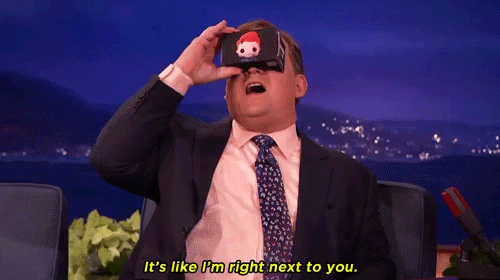
Great article. I like the spec idea. Would love more specific exercises for getting unblocked.
Glad you found this helpful! Many “experts” would say Spec work doesn’t help because agencies and production companies generally look for ACTUAL ad experience. But, it did wonders for me. Best way to prove you can achieve a certain look/feel and get your foot in the door gradually, instead of hoping to be miraculously discovered 🙂
Maybe I’ll try for a followup article with more unblocking techniques. I’m always learning them, myself!
Thanks, Peter!
Hey, could you idiots stop spamming the forums and message boards of established film communities? Consider participating and building a genuine following instead of dumping a bunch of redundant posts and disappearing. You’re current tactic is having the exact opposite effect your hoping for, trashing your rep, not building it up.
Hi Sherlock,
Sorry you feel we’re spamming forums with redundant content. That’s definitely not our intention. Our intention is to write one new piece of content a week and share it with the community in hopes of giving some assistance.
If you look at our interactions throughout the internet, you’ll see we’re not just pushing our own content, but others’ as well. And, we’re all about the conversation. We’ll take a closer look at forum activities.
Respectfully, please refrain from name-calling when posting here. We want to create a homogenous and friendly environment.
Thanks
Not many mentions of sound here.
Must not be important.
Hey J.P.
I definitely had no intention of blowing off sound—I simply don’t do auditory exercises because I’m not a sound engineer/editor/recordist.
Are you? If you are, let us know if you’re interested in seeing a companion piece for audio. It’s super important!
Thanks
I found myself thinking repeatedly “ya, I do that. I enjoy it. I should do more of that. I am actually doing one of these ideas in real time. I work in live theatre and an actors, between acts, had an strange habit of looking around the stage for feathers that came loose from costumes and hiding them on the set. Other actors also stated to take part. I took a look at the stash one day to make sure it would not adversely affect the tech of the production. Not only did I see no problem I thought it looked like a nest so but started planting feathers on stage. My supervisor found the nest one day and with it in hand me if I knew about it. I said “put it back please its not hurting anything”. In the prop room one day I happened to find a small bird so I planted it in the nest. Then planted a feather and watched the reaction. By this time the original actor started to get bored finding my “plants” and he put the feathers in the nest absently without noticing the bird. A second actor finely did. So through the run thus far: bird found mate; mate laid 4 eggs; one has hatched; actors named it “Milo”; Milo has been fed by both the male and female bird (oddly both myself and the actors independently decided which was male and which was female and decided the same without and interaction.)
All the bird props just happen to appear in front of me and I appropriated them into new use.
Now the eggs have taken a little work.
Oh yeah when Milo hatched I cut open an egg and planted to be found. First actor looked at the egg shell on the stage; looked over at me sitting off stage and asked “bird poop?” Once hatchling was found things got a little excited. To the point that the assistant stage manager scolded them.
The moral of the story is you never know where a fleeting idea may take you so always be ready for travel.
That’s great! Creativity can lead to some pretty unforeseen and awesome results.
Thanks 🙂